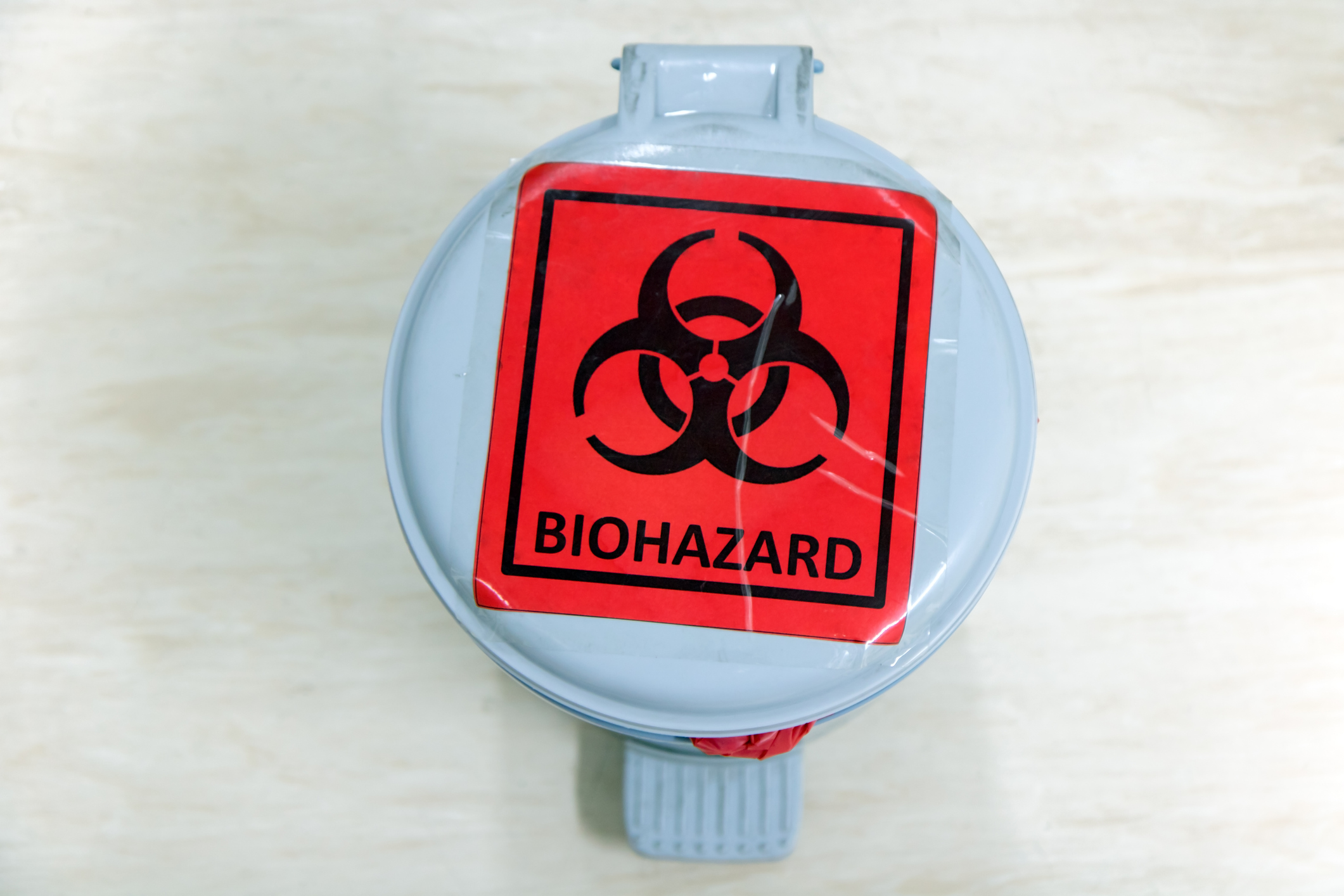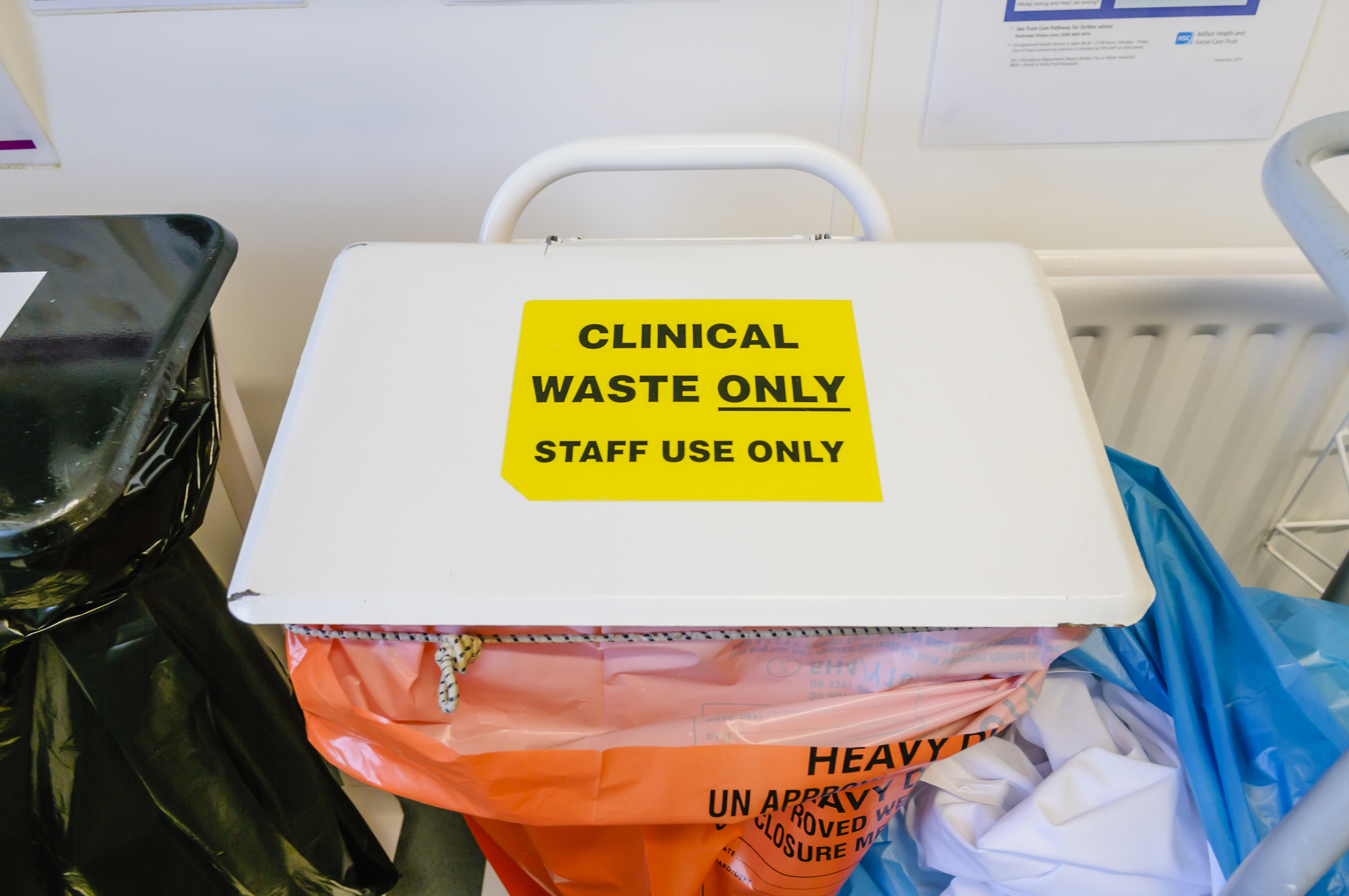How to dispose of biohazardous waste
All employees at risk of Occupational Exposure to biohazardous waste will need to receive training, both initially and yearly going forward.
Communication of biohazardous materials to employees
A biohazard warning label must be added to every container or bag of medical waste and all waste must be disposed of properly.
Regulated waste is any of the following:
- Contaminated items that could potentially release OPIM or blood in a semi-liquid or liquid state if they are compressed
- Contaminated sharps
- Liquid or semi-liquid blood or OPIM
- Items which are covered in OPIM or dried blood and could release these materials during handling
- Microbiological and pathological waste containing OPIM or blood
To verify that bags containing non-regulated waste have been decontaminated and pose no health risk, all containers must be labeled, dated and signed. Note, these bags shouldn't be orange, red or have a biohazard symbol. Housekeepers and custodians won't handle regulated waste and will not dispose of bags containing human or animal blood, vials of blood, biohazardous waste, and bloody rags or towels from labs unless the bag is clearly labeled as non-hazardous. These custodians will have been instructed not to handle any non-regulated waste unless it's marked and labeled.
If it has been decontaminated or autoclaved before disposal, non-regulated waste can be disposed of in plastic trash bags in a regular dumpster. If they are to be disposed of in the regular trash after autoclaving, unlabeled autoclave bags should be used. Note: biohazard bags cannot be disposed of in a regular trash dumpster, so once waste is placed in a biohazard waste bag, it must be disposed of following the correct procedures.
Any regulated waste must be disposed of in red biohazard bags or properly labeled containers. Sharps must also be placed in a puncture-resistant container. These containers and bags should be taken to your designated collection facility. You will need to refer to your bloodborne pathogens Exposure Control Plan for the right disposal procedures to follow.







